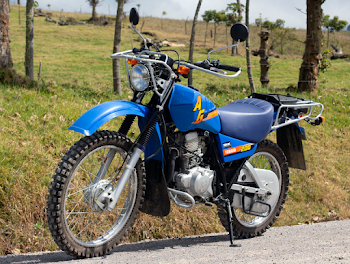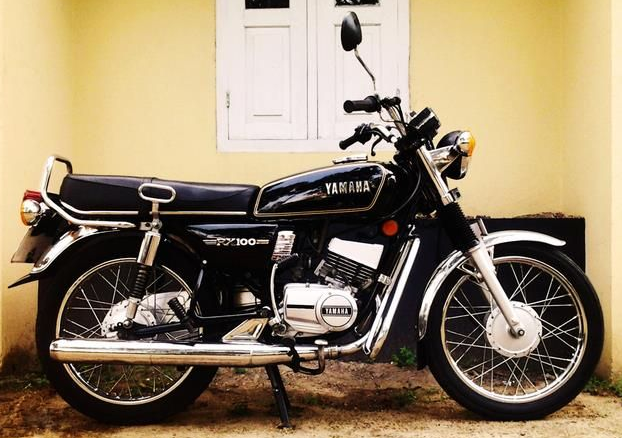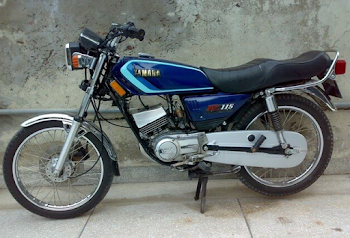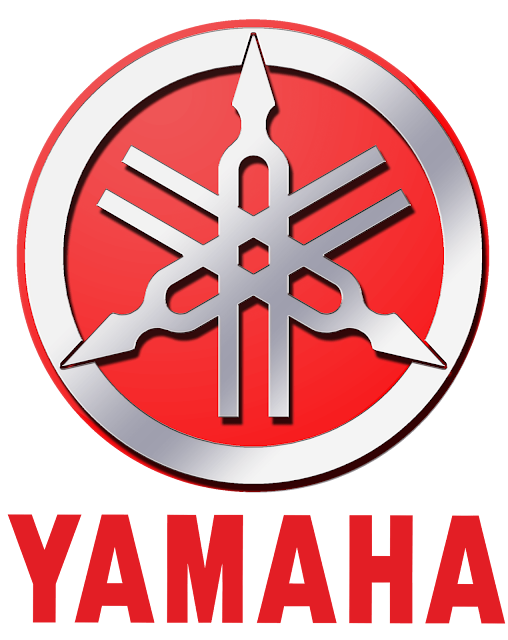Welcome to our comprehensive guide on the Yamaha AG 200. If you're in search of a reliable and versatile motorcycle that can handle various terrains and tasks, the Yamaha AG 200 is the perfect choice for you. In this article, we will delve into the features, benefits, and applications of the Yamaha AG 200, showcasing its exceptional performance and enduring popularity among riders worldwide.
 |
| Yamaha AG 200 |
Yamaha AG 200 is a popular motorcycle designed for off-road and agricultural use. It is known for its durability, versatility, and reliability. Here's a review of the Yamaha AG 200 based on the available information up until my knowledge cutoff in September 2021.
Design and Build
The Yamaha AG 200 features a rugged and functional design suitable for various terrains and tasks. It has a large, comfortable seat that allows for easy maneuverability and provides a comfortable riding experience. The bike is built to handle rough conditions and has a sturdy frame and suspension system that can handle off-road trails and uneven surfaces.
Engine and Performance
The AG 200 is powered by a 196cc, air-cooled, four-stroke engine. While not a high-performance engine, it is designed to provide reliable power and good torque for off-road riding and light-duty work. The engine is known for its durability and fuel efficiency, making it ideal for long rides or tasks that require extended periods of operation.
Handling and Suspension
The Yamaha AG 200 offers excellent handling capabilities, allowing riders to navigate through challenging terrains with ease. Its long-travel suspension system helps absorb shocks and bumps, providing a smoother ride over rough surfaces. The bike's lightweight construction contributes to its agility, making it maneuverable in tight spaces.
Utility and Features
The AG 200 is designed to be a versatile workhorse, suitable for a range of applications. It comes equipped with features like a rear cargo rack, front and rear drum brakes for reliable stopping power, and a robust skid plate to protect the engine and underside of the bike. The AG 200 also has a high ground clearance, allowing it to handle obstacles and uneven terrain.
HP & Torque
The Yamaha AG 200 is equipped with a powerful engine that delivers impressive horsepower (HP) and torque. Let's explore the horsepower and torque figures of this motorcycle:
Horsepower (HP): The Yamaha AG 200 generates approximately 13.3 horsepower. This power output provides the motorcycle with excellent acceleration and performance, allowing riders to tackle various riding conditions with ease.
Torque: While specific torque figures for the Yamaha AG 200 may vary, this motorcycle is designed to deliver strong and consistent torque across a wide range of engine speeds. The torque produced by the AG 200's engine ensures smooth power delivery and enhances its performance in off-road situations, enabling riders to conquer challenging terrains.
It's important to note that horsepower and torque figures can vary based on factors such as engine tuning, modifications, and environmental conditions. These figures provide a general idea of the Yamaha AG 200's power capabilities, but it's advisable to consult the manufacturer or refer to the motorcycle's specifications for precise details.
Overall, the Yamaha AG 200's horsepower and torque combine to provide riders with a capable and powerful motorcycle that excels in various riding scenarios, whether it's off-road adventures, agricultural work, or urban commuting.
Top Speed
The top speed of the Yamaha AG 200 is typically around 75-80 km/h (47-50 mph). However, it's important to note that the top speed can be affected by various factors such as rider weight, terrain, wind resistance, and other riding conditions. Additionally, modifications or aftermarket changes to the bike can also impact its top speed. It's always advisable to ride within the recommended speed limits and abide by local traffic regulations for safety purposes.
Mileage
The Yamaha AG 200 is known for its good fuel efficiency and mileage. While the exact mileage can vary depending on factors such as riding conditions, terrain, and riding style, the AG 200 generally offers a decent fuel economy.
Based on available information, the AG 200 can provide a mileage of around 30-35 km/l (70-82 mpg) under normal riding conditions. This makes it suitable for longer rides or tasks that require extended periods of operation without frequent refueling.
It's important to note that the actual mileage can vary based on individual riding habits, maintenance, and other factors. It's always a good idea to refer to the latest specifications and consult with Yamaha or a trusted dealer for the most accurate and up-to-date information on the mileage of the Yamaha AG 200.
Top Features List
Certainly! Here's a list of some of the top features of the Yamaha AG 200:
- Rugged Design: The AG 200 features a sturdy and functional design suitable for off-road and agricultural use.
- Durable Frame: The bike is built with a robust frame construction that can handle rough conditions and provide durability.
- Reliable Engine: Powered by a 196cc air-cooled four-stroke engine, the AG 200 delivers reliable performance and efficiency.
- Long-Travel Suspension: The bike is equipped with a long-travel suspension system that absorbs shocks and provides a smoother ride over uneven terrain.
- Cargo Rack: It comes with a rear cargo rack for conveniently carrying equipment or supplies.
- Skid Plate: A robust skid plate is included to protect the engine and underside of the bike from obstacles and rough terrain.
- Fuel Efficiency: The AG 200 is known for its good fuel economy, allowing for longer rides without frequent refueling.
- Maneuverability: With its lightweight construction, the AG 200 offers easy maneuverability in various terrains and tight spaces.
- Braking System: It features front and rear drum brakes that provide reliable stopping power and control.
- High Ground Clearance: The bike has ample ground clearance to tackle obstacles and navigate uneven surfaces with ease.
Applications of the Yamaha AG 200
The Yamaha AG 200 finds its utility in a wide range of applications. Let's take a closer look at how this versatile motorcycle can serve your specific needs:
1. Farming and Agriculture
For farmers and rural workers, the Yamaha AG 200 is an invaluable asset. Its ability to handle challenging terrains, carry heavy loads, and tow small trailers makes it an ideal companion for various farming tasks. Whether it's checking fences, herding livestock, or transporting equipment, the Yamaha AG 200 is built to withstand the demands of agricultural work.
2. Off-Road Adventures
If you're an off-road enthusiast seeking thrilling adventures, the Yamaha AG 200 is the perfect companion for your escapades. Its rugged construction, powerful engine, and exceptional maneuverability make it an ideal choice for exploring trails, conquering mountainous terrains, and discovering remote destinations that are off the beaten path.
3. Urban Commuting
The Yamaha AG 200 is not just limited to off-road adventures; it also excels in urban environments. Its compact size, agility, and fuel efficiency make it a convenient and economical mode of transportation for navigating through busy city streets or commuting to work. Beat the traffic and enjoy the freedom of two wheels with the Yamaha AG 200.
FAQs about the Yamaha AG 200
FAQ 1: What is the fuel consumption of the Yamaha AG 200?
The Yamaha AG 200 boasts impressive fuel efficiency, allowing you to cover long distances without frequent refueling. On average, it can achieve a fuel consumption of approximately 40-45 miles per gallon (MPG), making it a cost-effective choice for both work and leisure.
FAQ 2: Can the Yamaha AG 200 handle steep inclines?
Yes, the Yamaha AG 200 is equipped with a capable engine and a low-range gearbox, enabling it to tackle steep inclines with ease. Whether you're traversing hilly terrains or climbing mountains, this motorcycle provides the necessary power and control to conquer challenging slopes.
FAQ 3: Does the Yamaha AG 200 come with a warranty?
Yes, Yamaha offers a limited warranty on the AG 200, providing you with peace of mind and assurance of the motorcycle's quality and reliability. The specific terms and conditions of the warranty may vary depending on your location, so it's advisable to check with your local Yamaha dealer for detailed information.
FAQ 4: Can the Yamaha AG 200 be modified for specific purposes?
Absolutely! The Yamaha AG 200 is highly customizable, allowing riders to modify it according to their specific needs. Whether you want to add accessories, upgrade the suspension, or enhance the storage capacity, there is a wide range of aftermarket parts and modifications available to tailor the motorcycle to your requirements.
FAQ 5: Is the Yamaha AG 200 suitable for beginners?
Yes, the Yamaha AG 200 is an excellent choice for beginner riders. Its user-friendly design, predictable power delivery, and forgiving handling characteristics make it an ideal motorcycle for those who are just starting their two-wheeled journey. With proper training and practice, beginners can quickly adapt to the Yamaha AG 200 and build their confidence on the road or off-road.
FAQ 6: Where can I find authorized Yamaha AG 200 dealerships?
To find authorized Yamaha AG 200 dealerships near you, you can visit the official Yamaha website or contact Yamaha's customer support. They will provide you with a list of authorized dealerships in your area, ensuring that you can purchase your Yamaha AG 200 from a trusted source and receive excellent customer service.
Conclusion
The Yamaha AG 200 is a versatile and reliable motorcycle that caters to a wide range of needs and applications. Whether you're a farmer, adventurer, or urban commuter, this remarkable machine offers exceptional performance, durability, and versatility. With its powerful engine, off-road capabilities, and adaptability, the Yamaha AG 200 is truly a workhorse that delivers in any environment. Embrace the freedom of the open road and experience the excellence of the Yamaha AG 200.



















